Back to basics –
Home Security
Home security - it’s a term we’re all familiar with, but just how much do you know about keeping your home a safe place to live in?
What time of day do burglars love more than any other? What’s the primary cause of household fires? What are the tell-tale signs of a carbon monoxide leak? Have a go at our quiz to test your knowledge, and then find out all you need to keep you and your home safe with our handy introduction to home security basics.
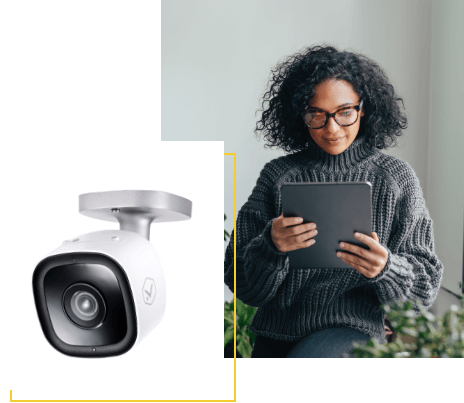
Incorrect :(
You got it










{{correct}} out of {{questions.length}}
Security Novice
Better Luck Next Time
You’ve got some of the basics, but it looks like you could really benefit from reading our blog below, and then giving the quiz another go.
Security Sheriff
Average Insight
Not bad knowledge, but it seems that your security know-how could be brought up to speed by browsing through the expert advice in the blog below.
Security Sargeant
Almost Perfect
Looks like you’ve pretty much got everything under lock and key when it comes to keeping your home safe and secure. Find out what’s still eluding you with our specialist tips and tricks in the blog below.
Security Guru
The Perfect Round
Turns out you’re top of the pops when it comes to our quiz! For even more insight on home and fire security, check out our blog below.
Your personal details are safe and sound with us. For more info, read our privacy policy.
Things that go bump in the night
Burglaries can happen at any point during the day, and you should always be aware of the potential risk to your home. Traditionally, burglars would target homes during daylight hours when a large proportion of the nation would be out at work and children would be attending school. But according to Compare The Market, due to the covid pandemic, more of the population have been working from home and the dynamic has changed, with a reduced rate of daytime burglaries. Burglars it now seems, favour the cover of darkness to break in, and over 60% of burglaries are now committed in the evening, with the hours between 18:00 and midnight recorded as the peak period.
Although this is the time of the day when you’re most likely to be slowing down and relaxing, or, now that lockdown measures are easing, to be heading out to socialise, there are still plenty of precautions that you can take to deter burglars from targeting your home.
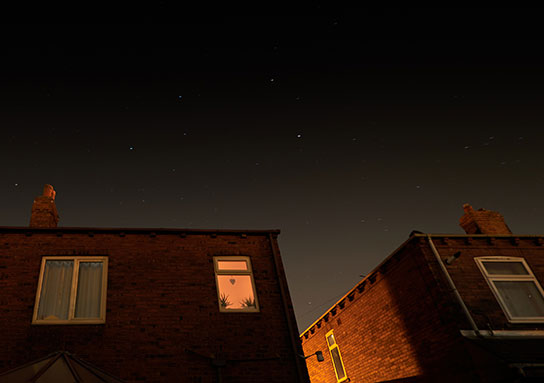
of burglaries are now committed in the evening
Double check that all of the potential points of entry to your home have been locked, and that you’ve not left any open invitations for unwanted evening entrants. Unsurprisingly, unlocked windows and doors are the easiest route into your home, and yet this is something which takes minimal effort to prevent. So, whether you’re heading out, or are at home - don’t take any unnecessary risks keeping a home secure.
Appearances are everything, so if it looks like you are up and about, or at home, then that is one of the best deterents available. For example, our ADT Smart Home package is a great investment for both your home and your peace of mind. Not only will it include a flashing bell box, which is an imposing sight for any would-be burglar, but it allows you to keep a check on your property from afar. By being connected to your Wi-Fi, this sort of home security system can also interact with smart bulbs, which give you the option of keeping things well lit at home at the swipe of a touch screen. This means that, even if you take a post-lockdown holiday, you can still make it look like you’re in.
We know that some of you might like to keep a spare key tucked away in the shed, under the doormat or even in an inconspicuous plantpot in the garden, but this is an open invitation to your home. If you are going to keep a spare key somewhere, the best option is always with a trusted neighbour. Locksmiths Keytek report that 6% of burglaries were committed by someone who was able to enter the property with a key.
Counting the cost
When a burglar targets you it doesn’t necessarily mean they were looking for your most valuable possessions. Jewellery often needs to be appraised to see if it’s worth stealing, while high spec smart TVs and interior soundsystems can be difficult to quickly remove from a home.
Some burglars may still look towards a big earner and take your car keys, but the largest number are now targeting the most straightforward route to a quick buck - your debit or credit card. If they are able to find your wallet or purse, then this may give them access to your personal data - information that they can potentially sell on. With this in mind, make sure to keep your personal items in a concealed place, and if they are taken to report them stolen immediately.
It’s important to bear in mind that if your home is burgled, it’s not just items of value that could potentially be taken, but damage will also likely be caused to your property if a lock has been forced or broken. The Office for National Statistics suggests that the average cost of damage caused by an attempted break-in stands at £1,413, while if a burglar manages to get into the property that increases to £2,856. It is essential that you have home insurance in place that covers the costs of a burglary and any items that are stolen. There are many home security options available to help minimise the risk of a burglary and increase your peace of mind.
The average cost of damage caused by an attempted burglary is
£1,413If the burglar enters the property, this increases to
£2,865Fundamentals of fire safety
Fire is a terrifying prospect in a home, and there are so many potential ways of igniting a blaze. There are around 37,000 home fires in the UK a year, triggered by a variety of factors. Historically, discarded cigarettes would often have been seen as the primary cause, but with Public Health England reporting that smoking rates continue to decline year on year, domestic fires caused by cigarettes are becoming less prevalent. That being said, it is vital that all cigarettes are properly stubbed out, and you should never smoke in bed.
The primary source of home fires is a misuse of cooking appliances, such as chip and cooker top pans, which should never be left unattended. Kitchens require equipment that needs to be plugged in and can gain heat rapidly, and it’s vital that as soon as you have finished using a piece of cooking equipment, it’s properly turned off. By leaving an appliance on standby, there is always a risk that something can happen.
of smoke alarms didn’t make a sound during a fire due to a missing or worn out battery
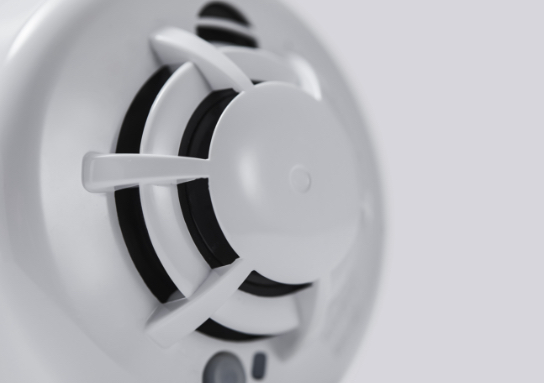
Awareness is key
Staying on track with your fire safety is something that can become second nature, especially if you have a smoke detector. A well-maintained, working smoke detector improves your chances of survival from a home fire, and this is why it is so important to regularly check your detector, because it’s there to do a job, not just take up precious wall space. In 2018 it was reported that 38% of smoke alarms didn’t make a sound during a fire, this was as a result of a missing, worn out or even removed battery. With this in mind, invest in a monitored smoke alarm, and cut out the potential problem.
A fully functional smoke alarm is a must have in every home, but if you live in a property that is spread across multiple floors, then it is vital that each level has a monitoring device on it. The quicker you’re aware of a fire breaking out in your home, the more time you have to react, especially because smoke moves at a rapid rate, and can soon affect vision and breathing. There are many avoidable ways that a fire can start in your home, for instance: if a heater is positioned too close to something, if clothes are left draped over a lamp and even as a result of a romantic candlelit dinner for two – so make sure to blow the flames out when you’ve finished eating.
If a fire does break out in your home, then it’s essential that you have a plan of action, which everyone in your home is aware of. It is more important for you all to get out of the property to safety, than it is to put yourself at risk by trying to rescue family heirlooms. If you are awoken in the night by a smoke alarm, or by the sound of a potential fire, make sure to wake everyone, and to leave through the closest route possible. Once you have evacuated your home, make sure to call the fire brigade, and not to re-enter the building until you are told it’s safe to do so. When it comes to remaining safe during a fire remember the motto,‘Get out, get the Fire Service out, stay out.’
Go put it out
If a blaze begins in the kitchen, it will often have been started by oil reaching an unstable temperature. The first sign that this is about to happen is if a pan with oil in it starts to boil. If not turned off, it will proceed to boil and then smoke, before finally catching fire. Vegetable oil will need to reach a temperature of over 200°C to hit this point. It is imperative that you stay calm and don’t try to put the fire out with water, as this can splash the oil and potentially see the fire spread.
The UK Fire Service advises that your first action should be to call 999, and not to attempt to put the fire out yourself. As soon as a fire has started you shouldn’t take any risks and should have a clear escape route mapped out, just in case the blaze spreads. To avoiding putting yourself in danger, don’t try and move the pan, and only turn the heat off if it is safe enough for you to do so.
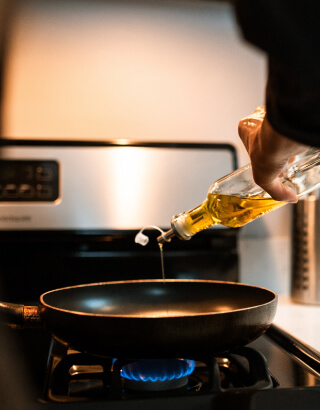
The invisible leak
Carbon monoxide is a poisonous gas that has no taste or smell, and can cause sickness and even in extreme cases death, if inhaled. According to NHS statistics there are 60 deaths per year due to accidental poisoning from carbon monoxide in England and Wales, and it is something that you have to be wary of in your home. It is often difficult to identify the signs of low-level exposure, but symptoms most commonly include tension headaches, dizziness and shortness of breath. When the levels of poisoning are more intense it can see cases of vertigo, changes in personality and even a loss of physical coordination. So, which home appliance can leak carbon monoxide, and how do you prevent a leak?
Any fuel burning appliances could potentially leak carbon monoxide – such as gas cookers, stove tops and gas fires - but the most common potential offender is a boiler, where it is created by any fuel that has not completely burned due to a lack of oxygen. To ensure that carbon monoxide is not leaked inside the home, when the gas is produced, a boiler has a flue which releases it outside. It can sometimes leak, however, and as a result it needs to be monitored.
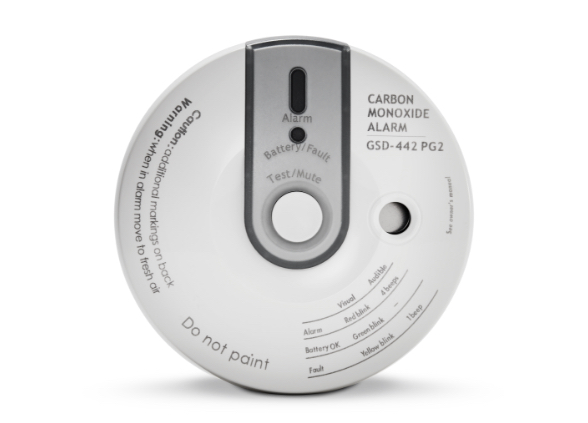
Install a carbon monoxide detector in every room where you have a gas appliance
”The best ways of keeping this in check is to install a carbon monoxide detector in every room where you have a gas appliance. Government regulations state that an alarm must be installed in every room which is used either wholly or partly as living accommodation and contains a solid burning device.
The tell tale signs of a carbon monoxide leak can be seen if your boiler struggles to stay alight, because this would suggest that there isn’t enough oxygen in the boiler to keep a flame burning. Meanwhile, if you’re seeing any dark staining around your gas appliances or the windows are becoming increasingly covered in condensation, then it is best to get in touch with a Gas Safe Registered (GSR) engineer, who will then come and check on any potential issues. Remember, when it comes to all aspects of home safety, sooner is always better, and if you have any concerns about a leak, contact the National Gas Emergency Service.
For more information about home security, visit our blog, or get in touch with a helpful member of our team. We have been experts in the field of home security for almost 150 years, and our flexible ADT security packages are designed around you, helping you feel safer in your home - so why not get a free quote today?





